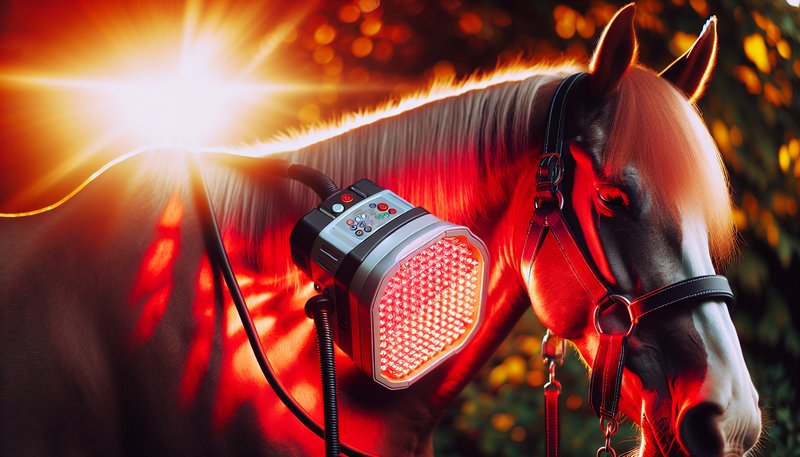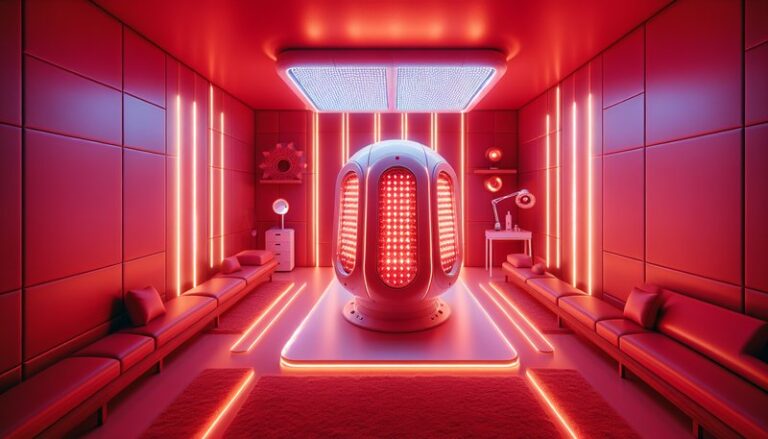What Does Red Light Therapy Do For Horses?
What Does Red Light Therapy Do For Horses?
Have you ever noticed how horses can suffer from a range of ailments just like humans? As many horse owners and trainers know, finding effective treatments for equine injuries and health issues can be challenging. Red light therapy has recently gained attention as a potential solution worth exploring.
In this article, we will delve into the workings of red light therapy and its specific benefits for horses. We’ll also discuss considerations, alternatives, and answer some common questions regarding this innovative treatment method.
Key Takeaways
- Red light therapy can aid in healing injuries and reducing inflammation in horses.
- This non-invasive treatment is safe and can be used alongside other therapies.
- Considerations include session duration, frequency, and the specific condition being treated.
What is Red Light Therapy?
Red light therapy, also known as low-level laser therapy (LLLT), employs specific wavelengths of light to promote cellular function and stimulate healing processes. By using red and near-infrared light, this therapy penetrates the skin and tissues, enhancing blood flow and encouraging cellular regeneration.
Historically, red light therapy has been employed in various medical fields to treat conditions in humans, and its application has expanded to veterinary medicine. The therapeutic light can be used on different parts of the body, making it versatile for treating surface wounds, deeper tissue injuries, and even chronic pain.
What are the Benefits of Red Light Therapy?
Red light therapy offers a range of compelling advantages for horses, aiding recovery and overall well-being.
Improved Healing of Injuries
Red light therapy can enhance the healing process of injuries by promoting cell regeneration. It increases the production of ATP (adenosine triphosphate), which fuels cellular activities essential for healing. This effect can be particularly beneficial for horses recovering from cuts, abrasions, or more serious injuries.
Reduction of Inflammation and Pain
Inflammation and pain are common issues in horses due to injuries or conditions like arthritis. Red light therapy can help alleviate these symptoms by improving circulation and decreasing inflammatory markers. As a result, many horse owners report decreased pain levels in their horses after treatment.
Enhanced Performance and Recovery
For performance horses, maintaining peak condition is crucial. Red light therapy can expedite recovery from strenuous activity, reducing muscle soreness and fatigue. Many trainers use it as a proactive approach, integrating it into regular care routines for high-performance equines.
Promotion of Overall Well-being
Beyond injury treatment, red light therapy can contribute to overall equine health by supporting mood and comfort. The calming effects of the therapy can also reduce stress levels in horses, which is beneficial for their mental state and behavior.
Is it Possible to Use Red Light Therapy for My Horse?
Absolutely—using red light therapy on horses is not only possible but also increasingly common among equestrians and veterinarians. However, it is essential to understand how to properly execute this therapy to ensure maximum effectiveness and safety.
What are the Advantages of Using Red Light Therapy?
Using red light therapy for horses comes with several advantages:
-
Non-Invasive Treatment: Unlike certain conventional treatments, red light therapy does not require needles or invasive procedures, making it a worry-free option for nervous horses.
-
Easy Integration: This therapy is easy to incorporate into existing care routines without complicated equipment or lengthy sessions.
-
Minimal Side Effects: As a low-risk therapy, there are few reported adverse effects, allowing for safe use alongside other treatments.
What are the Disadvantages of Using Red Light Therapy?
While beneficial, there are some challenges and disadvantages to consider:
-
Time Commitment: Regular sessions are necessary for optimum results, requiring a commitment from the owner or caregiver.
-
Cost Factors: Depending on the equipment and therapy provider, costs can vary significantly, which may be a consideration for some horse owners.
-
Requires Professional Guidance: For best results, it is advisable to work with a veterinarian trained in red light therapy to devise an effective treatment plan.
What are the Things to Consider Before Using Red Light Therapy?
Before proceeding with red light therapy, it’s crucial to consider several important factors.
Discover the details in Red Light Therapy Frequency
Condition of the Horse
Understanding the specific health issues your horse faces is vital. Different conditions may respond better to red light therapy, so ensuring it aligns with their needs is important.
Session Duration and Frequency
Therapy sessions can vary in length depending on the desired results—working out a regimen that combines the right frequency and duration is crucial for effective treatment.
Consultation with a Veterinarian
Always consult with a veterinarian experienced in red light therapy. They can offer guidance on the most effective protocols while ensuring the safety and suitability of the therapy for your horse.
What are the Alternatives to Red Light Therapy?
If red light therapy isn’t suitable for your horse, several alternatives can be considered.
Cold Laser Therapy
Similar to red light therapy, cold laser therapy uses different wavelengths of light to treat pain and inflammation, albeit with different mechanisms and depth of penetration.
Read the detailed post on Can you use red light therapy on eyes?
Acupuncture
Many equestrians use acupuncture as an alternative treatment. This traditional method focuses on alleviating pain and improving overall energy flow in the horse.
Physical Therapy
Physical therapy techniques, including stretching, massage, and exercises, can also help rehabilitate and maintain horses’ athletic condition.
Conclusion: Is it Recommended to Use Red Light Therapy?
Red light therapy offers promising benefits for horses, especially in promoting healing, managing pain, and improving overall performance. With numerous advantages and few risks, it’s worth considering as part of your horse’s care regimen. However, it’s essential to address the specific needs of your horse and consult with a veterinary professional before starting treatment.
Frequently Asked Questions
Can red light therapy be used on any horse?
Yes, red light therapy is generally safe for most horses; however, consulting with a veterinarian is recommended to tailor the therapy to specific health needs.
How long does each red light therapy session take?
Sessions can vary in duration, typically ranging from 15 to 30 minutes, depending on the area being treated.
Is red light therapy an approved treatment?
While growing in popularity and supported by numerous studies, it’s important to note that not all veterinary associations officially recognize it yet. Check with a qualified veterinarian to ensure the therapy aligns with established treatments.
How often should I schedule sessions?
This depends on the condition being treated. Generally, an initial series of sessions (1-3 times per week) followed by maintenance sessions is advisable.
Are there any contraindications for red light therapy?
Red light therapy should be used cautiously in horses with certain conditions, such as photosensitivity. Always consult with a veterinarian to assess suitability for your horse.





